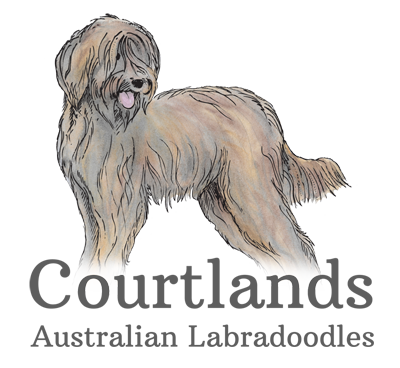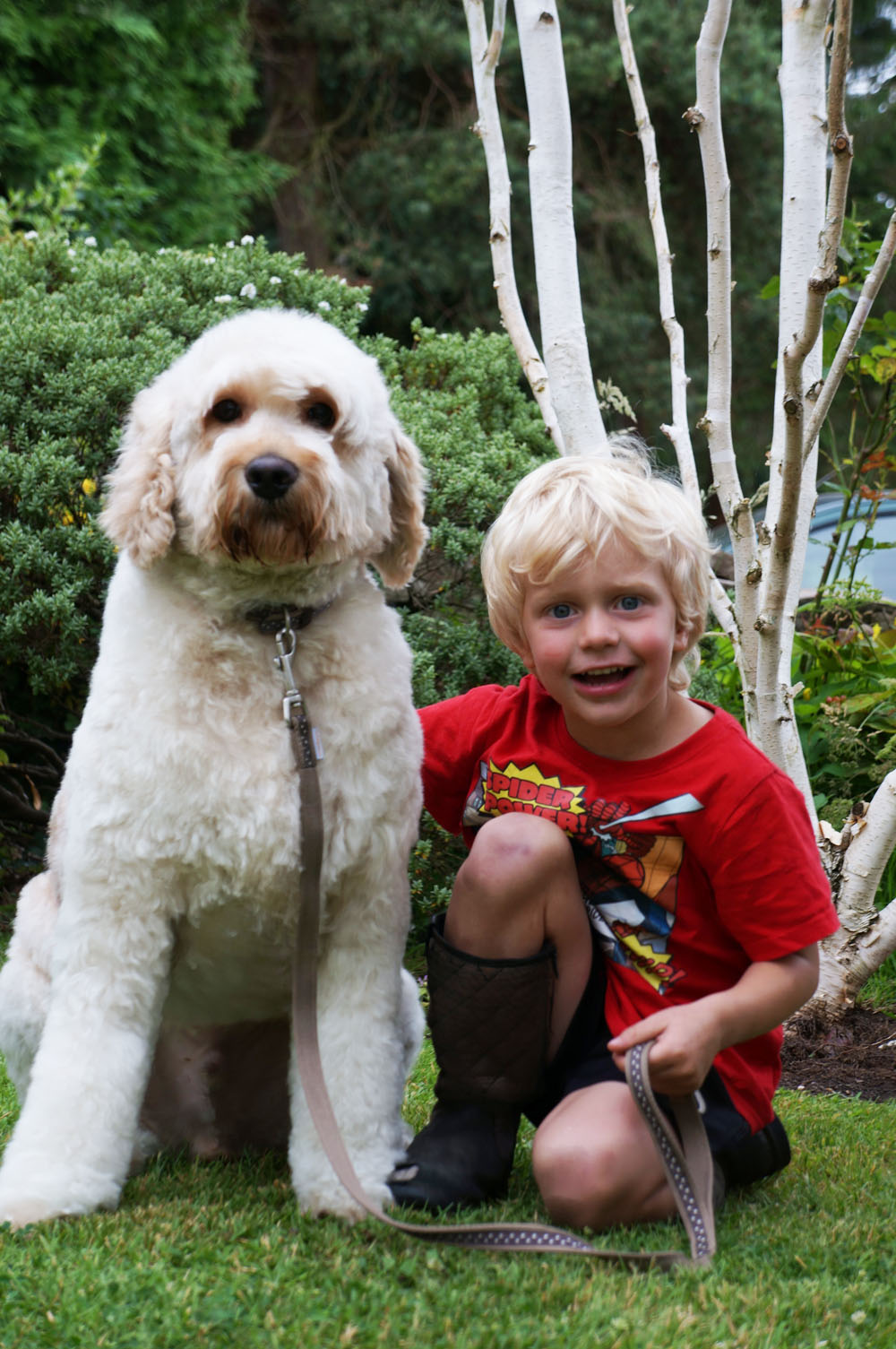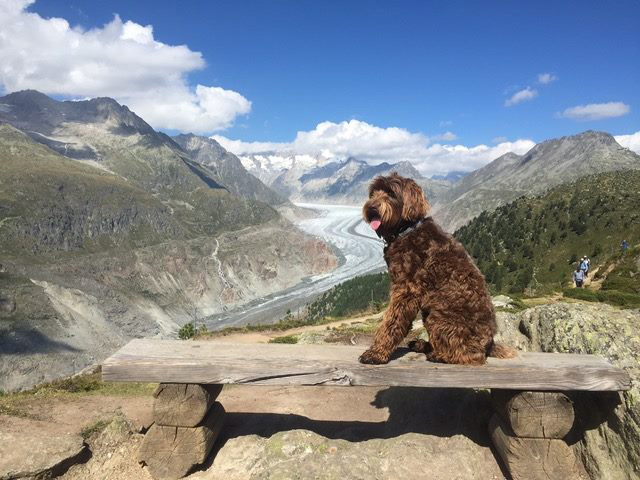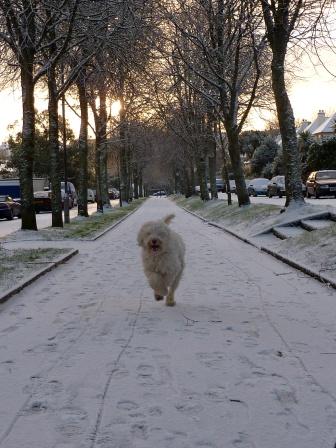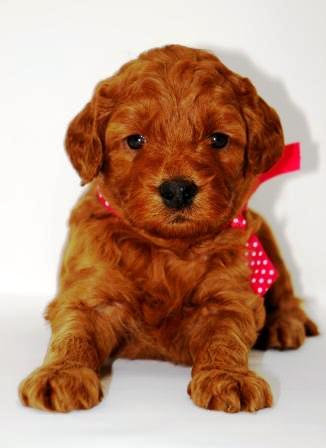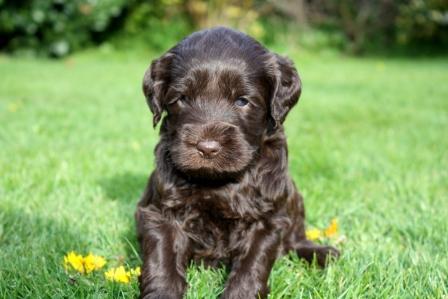Australian or Labradoodle Origin – Is there a difference?
Yes. As you are learning about Labradoodles, you will certainly come across the term F1. This term refers to the puppy from a Labrador parent and a Poodle parent. With a first generation cross, it is impossible to predict the results. You don’t know if the dog will take on the low-non shedding coat qualities of the poodle or if it will shed like crazy. The appearance of the dog is not predicable either. Some British labradoodles end up like scruffy Labradors with beards!
You will also run into the term, F1b, which means the F1 labradoodle is m¬ated back to a poodle. With this cross there is more consistency in the coat, about an 6/10 chance that the puppy will be low shedding if both the parents were non-shedding. This is due to the large amount of poodle genetics i.e. 75% Poodle
F1 = First cross between a Lab X Poodle
F1b = F1 X Poodle
LO = Labradoodle Origin: meaning there are only Labrador and poodle genes in a Labradoodle. You may see numbers following the LO, these would refer to the generations.
Then there’s the Australian Multigenerational Labradoodle. In my opinion far superior, exceptional dogs in every way. Australian Labradoodles have more than just Labrador and poodle bloodlines at work. The Australian Labradoodle is an infusion of 6 parent breeds. In addition to the Labrador and poodle, the following breeds used in the development of the Labradoodle are approved as parent breeds in Australia: the Irish water Spaniel, Irish Soft coated wheaten, Cocker Spaniel and the English Cocker Spaniel. When you purchase an Australian Labradoodle from a genuine breeder, you have a much better idea of exactly what you are buying. The size, coat, temperament, look, allergy friendliness, and non-shedding qualities are a much more predictable. These wonderful qualities that have created the Australian Labradoodle that we now know and love.
What is the size of an Australian Labradoodle?
There are 3 sizes of the Australian Labradoodle, the measurements below are taking at the shoulder.
Miniature: 13 – 16″ at the shoulder, weighs 8 – 15kg – comparable to a Cocker Spaniel size
Medium: 17 – 20″ at the shoulder, weighs 15 – 25kg – comparable to a Springer Spaniel – Small Labrador
Standard: 21″ + at the shoulder, weighs 25kg+ – comparable to an Irish Water Spaniel – Standard Poodle.
All Australian Labradoodles, no matter the size are indoor dogs. If you are interested in doing some serious physical activities with your dog such as running, agility, flyball or the like, stick with either a medium or a standard size. On the other hand, if you are interested in the perfect small dog, the miniature Labradoodle is a great lap dog size.
